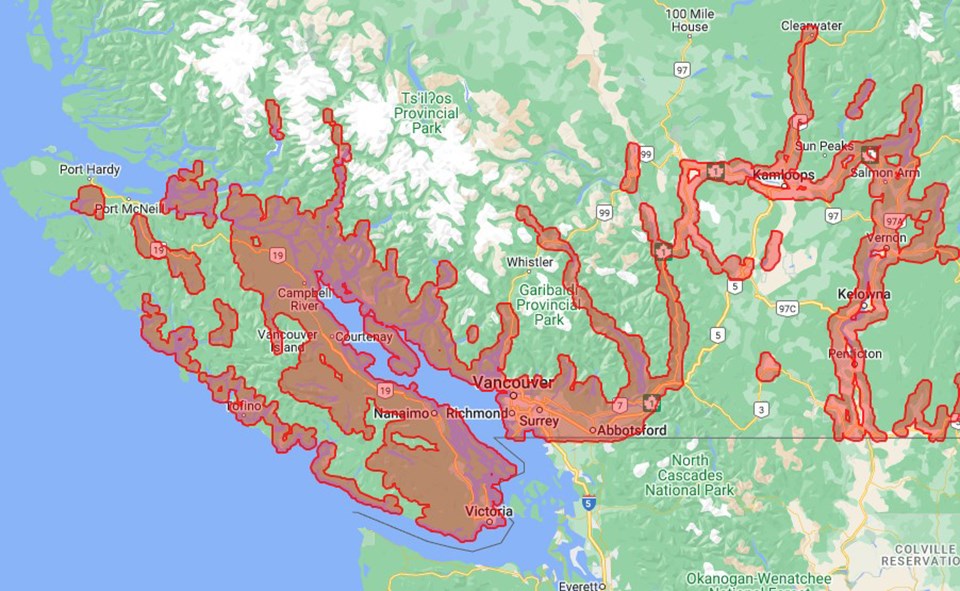BC Centre for Disease Control (BCCDC) recently identified high-risk Lyme areas, as seen in red on the map above.
Lyme disease is the most common tick-borne disease in BC, where reported cases have remained relatively steady over the past decade, according to BCCDC.
Cases have been driven by the Western black-legged tick (Ixodes pacificus) — a species ranging south to California and carrying the bacteria causing Lyme disease at a rate of about one in 100 insects. Starved, these ticks are rarely bigger than a sesame seed, but once engorged on a blood-meal, they can balloon to the width of a fingernail.
In British Columbia, Western black-legged ticks usually pick up the disease when they feed on deer, mice, squirrels or chipmunks — all known reservoirs for the bacteria. But a dog, farm animal or human can easily fill in for a meal. One bite from an infected tick and a debilitating disease can follow.
"The infection is preventable by avoiding tick bites and removing attached ticks early," states BCCDC. "Early diagnosis and antibiotic treatment are important because Lyme disease can lead to serious complications if left untreated."

-05-18_at_35540_pm.jpg;w=120;h=80;mode=crop)

